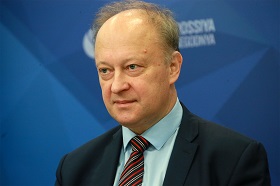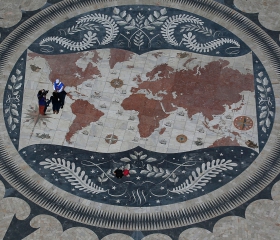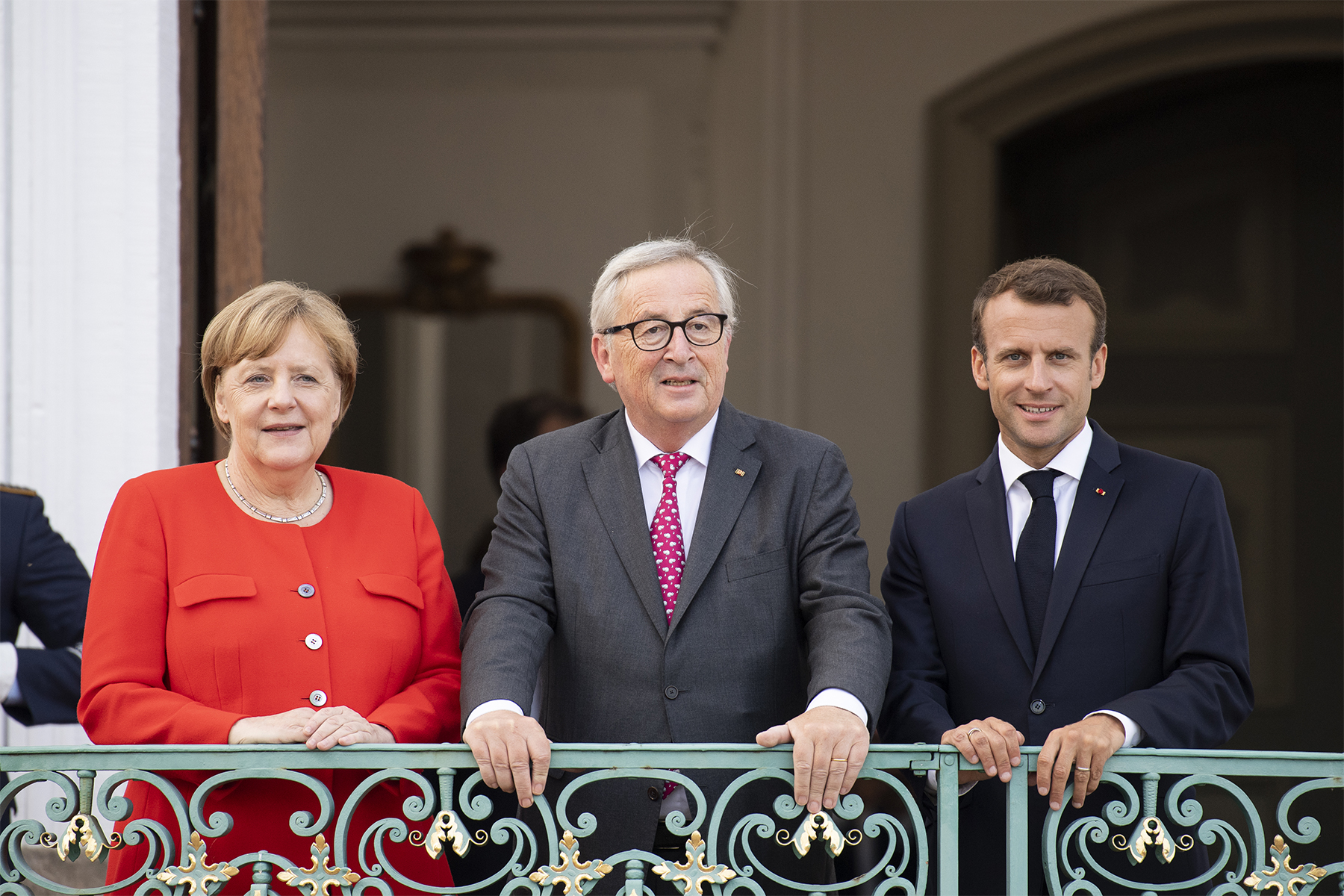The “celebration of disobedience” that took place on November 9, 1989, was not at all the end, but rather the beginning of the long and painful transformation of Europe. The main battles for Europe were still to come. As we all know, the Carnival is always followed by the Great Lent, which none of us in our state of elation wanted to see.
Perhaps the biggest mistake that my generation (those who were around 30 when the Wall came down and who are roughly 60 now) made was that we, that is, many of us, were rather irresponsibly counting on the imminent “end of European history,” the irresistible march of globalization and the impending triumph of European rationalism. The generation of people who were brought up on Friedrich Hegel, Auguste Comte and Karl Marx could not help but be social determinists. We all know that, according to Hegel, “the mole of history digs slowly, but digs well.” This mole undermined the archaic structure that artificially divided the great city and the great country. It was thus with this same sense of logical inevitability that history had to reunite European civilization, which had been similarly divided on artificial grounds.
My generation has been punished for its deterministic way of thinking and its arrogance. And not only in Russia, but also – to one degree or other, and in different ways – in Poland, Hungary, the United Kingdom and Greece, as well as in those very same eastern states that have long since become part of a reunified Germany and in other places across the continent. “Freedom and life are earned by those alone who conquer them each day anew,” Goethe put Hegel to shame once again.
And what we perceived as a detailed and precisely measured schematic drawing of European unification (reunification?) turned out to be nothing more than amateur sketches, pencil drawings that were several pages short of a complete project. Europe lacked the very same qualities that Germany had displayed during reunification: political will and determination; the ability to set clear goals and ensure that they are met in a timely fashion; and the foresight to make sure that plans do not exceed capabilities and check this on a regular basis. Artists and visionaries did not turn into designers and engineers, and their place in European construction was taken by entirely different people who pursued more mercantile and particularistic goals.
It is difficult for me to imagine what needs to happen in Europe to restore the atmosphere of those now very distant days of November 1989, and for the idea of European unity to once again acquire flesh and blood. A truly unique opportunity has been missed, unfortunately, forever. As the saying goes, “no man ever steps in the same river twice.” Our sketches and drafts from 30 years ago are unlikely to be of any use today, just like most of the projects and propositions suggested in the 1960s were untenable a quarter of a century later during perestroika.
Today, our children have to start their struggle against the new European walls in different and far more complicated circumstances than those that reigned 30 years ago. And not only because our wonderful slogans of the time have withered and faded, but also because in the three decades since the fall of the Berlin Wall our generation has accumulated a mountain of new problems that will be exceptionally difficult to tear down or overcome. And it has to be done in a world where Europe has long since ceased to be seen as a symbol of progress and a source of inspiration.
In any case, the new generation of Europeans will find things much harder than we did. It is entirely possible that the idea of “European reunification” will seem archaic in the emerging globalized world, and the leaders of the new generation will no longer be guided by geographical concepts, but rather by something completely different. Perhaps it is a good thing that our children are more sceptical and cynical and less trusting and romantic than their parents were back in 1989. However, if these “young leaders” turn out to be less ambitious than we were three decades ago, then it means we have done a poor job raising our children.
I was fortunate enough to be in West Berlin on that momentous day in November 1989 when the Berlin Wall came down, attending one of those round tables of "young European leaders" that were quite popular at the time. Around two dozen ambitious, energetic and for the most part extremely romantic-minded intellectuals and politicians in their early thirties had come from all corners of the continent to try their hand at being the leaders of the European nations for a day or two.
Of course, we wouldn’t have been worth our salt as young leaders if we had ignored the monumental event that was suddenly unfolding before our very eyes, not far from the Kurfürstendamm, where we were staying at the time. So, on the evening of November 9, having put off the future of Europe for a later date, and somehow finding the necessary tools in our hands, our fine company walked cheerfully past the Berlin Zoological Garden through the Tiergarten towards Brandenburg Gate. There we were immediately blended into the motley crowd of people who had, on a whim, decided to tear the Wall down.
“A Celebration of Disobedience”
In fact, tearing down the symbol of a divided Europe proved much harder than anyone had anticipated. It turned out the East Germans had done a fine job when they built the Wall – the high-strength concrete generously packed with steel reinforcement was a tough match for the home tools with which we had all come out. All our hammers, crowbars and sledgehammers could do was chip miserably away at the powerful reinforced concrete structure. We worked in shifts, changing over every 15 or 20 minutes or so.
This feverish activity brought laughable results, not at all consonant with the magnitude of the event we were living through. It was as if the Wall was mocking the feeble attempts of the ants that had clung to it to inflict at least some visible damage. We could get enough shards for souvenirs, but we were not looking for souvenirs – we were making history! We toiled deep into the night until we finally managed to bore a small hole in the wall, at which point we were eagerly greeted by the folk who had been hacking away at the eastern side of the hated structure just as persistently as we had been at our side. Encouraged by this, we redoubled our efforts.
A latecomer to our attack on totalitarianism had brought a cassette player, and the heavy rhythms of Pink Floyd's soundtrack, The Wall, boomed out in the direction of the majestic quadriga perched atop the Brandenburg Gate. The sounds flowed through the Wall, reflected off the powerful Doric gate columns, splashed onto the endless and poorly lit Unter den Linden and dissolved into the Berlin night air somewhere near the massive building of the Soviet embassy in East Germany. Pink Floyd unexpectedly turned into a kind of tuning fork for our actions that night, providing the rhythm for the blows of the countless hammers, crowbars and sledgehammers that were scatted over hundreds of metres of concrete wall.
If memory serves me correctly, the weather wasn't exactly festive that November night. To be honest, it wasn't much better during the day either: the gloomy Berlin autumn brought low morning clouds, and a sharp rain often accompanied the intense gusts of wind. But that night, as we moved into the main phase of dismantling the Wall, it became even colder and windier and altogether more unpleasant. But this didn’t detract anyone. On the contrary, there was a certain glint in everyone’s eyes, as if we had all knocked back a full glass of old brandy.
I will mention in passing that I don’t recall any groups of drunken East or West Berliners staggering around the city that night, or indeed the day after. It wasn’t until much later that the enthusiastic residents of the city really let loose. And nothing was spared, not even the famous quadriga that adorned the Brandenburg Gate; it took over a year to restore the long-suffering Victoria (nee Eirene, the Greek goddess of peace). It was such a historic moment that the people didn't even need alcohol, as everyone was on such an emotional high, overcome with a feeling of heartfelt unity and mutual affection.
The fact that I still belonged to the “Soviet Empire” did not seem to bother anyone or even cause them any discomfort whatsoever. On the contrary, I felt like it was my birthday. After all, it was my country that had launched the process of European unification, and nine times out of ten, the magic word Gorbachev would elicit a wide and sincere smile on people’s faces.
It was high time for a celebration. Gone were the fears of the past, the mutual suspicions and grievances. And for us, already fully grown adults, the night of November 9–10 was just as magical as New Year’s or Christmas Eve is for little children, when all the bad can be put in the past and a new life, where everything is good and correct, can begin. A road to a new reality had opened up behind the ruins of the wall – a still unknown and mysterious yet immeasurably attractive united Europe – all to the sounds of Pink Floyd. Not just Europe, but the entire immense world that was shaking off the reinforced concrete fragments of a cursed past now belonged wholly and completely to us!
A Farewell to Illusions
In all honesty, we can’t say that the next 30 years were full only of disappointments and that the alluring picture of European unity turned out to be yet another mirage, a product of a fevered imagination. On general, Europe is more united and freer than it was three decades ago.
In 1989, people my age could not have dreamed that they would someday be able to fly to Paris or London just as easily as they could fly to Leningrad or Kazan. Crossing the border into Europe used to carry an air of mystic ritual, now it is an everyday occurrence. European newspapers such as The Times and Le Monde are no longer located in restricted access areas in public libraries and are freely available to read on the internet. My native city of Moscow has become more European than at any point in its history.
Meanwhile, Berlin has undergone a magical transformation into perhaps the most dynamic capital in Europe. It takes my breath away whenever I have the good fortune to visit the newly rebuilt Pariser Platz or pass through the renovated Brandenburg Gate. I can’t shake the feeling that I am on some massive movie set, so different is the city today from the gloomy reality of 1989. And, of course, the atmosphere around these famous gates today is more readily associated with the Beethoven’s immortal Symphony No. 9 than it is with the somewhat outdated psychedelic rock of Pink Floyd.
The many difficulties that have arisen in the course of the reunification of East and West Berlin have not been fully overcome in the three decades since the Wall came down. The process of integrating the “neue Bundesländer” of Brandenburg, Mecklenburg-Western Pomerania, Saxony, Saxony-Anhalt and Thuringia has proved to be even more difficult and painful. There are still serious differences between the eastern and western parts of the country in terms of culture, way of life and political leanings – suffice it to mention the resounding victories of the right-wing populists from the Alternative for Germany in the east as evidence of the latter. But you have to hand it to the Germans, for today Germany is united not only on paper, but in practice too.
However, what about Europe?
The romantic dream of a united and indivisible Europe has remained just that, a dream. The yellow brick road did not lead to the Emerald City. The metaphysical wall dividing the continent into East and West has not disappeared, although the lines may have changed and acquired different forms. More accurately, the Wall has been replaced with a number of ramshackle fences, ill-kempt hedges and flimsy partitions, most of which can be easily crossed or even torn down completely should one so desire. The thing is, however, that nobody appears to have this desire. Or, at least, the needed commitment, stamina and vision. As the years turn into decades, the prospect of a Greater Europe moves deeper and deeper into an uncertain future, just like the horizon moves further into the distance with each step. And not only for those of us who live east of Poland and the Baltic states, but also for many lucky holders of a European passport.
Why is this the case? Is it indeed fair to say that “East is East, and West is West, and never the twain shall meet”? I don’t think that appeals to Rudyard Kipling are appropriate here. Beautiful lines from poetry and nonsensical geopolitical mantras are of little use when it comes to real life. Incidentally, Kipling’s ballad was about Great Britain and India, not the east and west of Europe. I think the attempts to use “The Ballad of East and West” as a way to justify the failed attempts to unite Europe would have amused its author no end.
Going on my own personal experience of interacting with Europeans across the entire continent from Lisbon to Vladivostok, I would not say that there are fundamentally different or incompatible social structures, cultural archetypes or group identities in this space. And if any fundamental differences do happen to exist, then the boundaries of socio-cultural spaces now lie within individual countries rather than between them.
One way or another, we are all Europeans, and the last three decades have brought us even closer rather than dividing us in our economic, social and cultural relations. This is why the current schism in Europe, in my opinion, is not a historical inevitability, nor has it been caused by the workings of fate. Instead, it is the result of a number of specific subjective missteps, mistakes and omissions on the part of politicians in both the East and the West.
I do not want to get bogged down in detailed analysis of these mistakes and omissions. We are unlikely to get a definite and comprehensive answer to the million-dollar question of “who is to blame?” any time soon. And saying that “everyone is to blame” is just as good as saying no one is to blame. I will confine myself to a single and very general observation. In 1989, my generation was too quick to celebrate, or rather, victory came too easy for us 30 years ago. Victory literally fell into our hands, like a gift of fate or unexpected miracle. It was almost too good to be true.
This is probably why the celebrations that broke out at Brandenburg Gate that night had a distinctive air of the medieval European carnival, complete with masks and pranks, dancing and singing in the streets, a festival atmosphere of liberation, overindulgence and carelessness. Everyone assumed that the fall of the Berlin Wall would signify the end of the most difficult and painful phase of the struggle for a united Europe. And the most complicated, painstaking and, more importantly, technical tasks of building the pan-European house could be put off until later.
Especially because we already had a firm idea of what the plans for this house looked like.
There Ain’t no Such Thing as a Free Lunch
It turned out that the “celebration of disobedience” that took place on November 9, 1989, was not at all the end, but rather the beginning of the long and painful transformation of Europe. The main battles for Europe were still to come. As we all know, the Carnival is always followed by the Great Lent, which none of us in our state of elation wanted to see.
Perhaps the biggest mistake that my generation (those who were around 30 when the Wall came down and who are roughly 60 now) made was that we, that is, many of us, were rather irresponsibly counting on the imminent “end of European history,” the irresistible march of globalization and the impending triumph of European rationalism. The generation of people who were brought up on Friedrich Hegel, Auguste Comte and Karl Marx could not help but be social determinists. We all know that, according to Hegel, “the mole of history digs slowly, but digs well.” This mole undermined the archaic structure that artificially divided the great city and the great country. It was thus with this same sense of logical inevitability that history had to reunite European civilization, which had been similarly divided on artificial grounds.
My generation has been punished for its deterministic way of thinking and its arrogance. And not only in Russia, but also – to one degree or other, and in different ways – in Poland, Hungary, the United Kingdom and Greece, as well as in those very same eastern states that have long since become part of a reunified Germany and in other places across the continent. “Freedom and life are earned by those alone who conquer them each day anew,” Goethe put Hegel to shame once again.
And what we perceived as a detailed and precisely measured schematic drawing of European unification (reunification?) turned out to be nothing more than amateur sketches, pencil drawings that were several pages short of a complete project. Europe lacked the very same qualities that Germany had displayed during reunification: political will and determination; the ability to set clear goals and ensure that they are met in a timely fashion; and the foresight to make sure that plans do not exceed capabilities and check this on a regular basis. Artists and visionaries did not turn into designers and engineers, and their place in European construction was taken by entirely different people who pursued more mercantile and particularistic goals.
It is difficult for me to imagine what needs to happen in Europe to restore the atmosphere of those now very distant days of November 1989, and for the idea of European unity to once again acquire flesh and blood. A truly unique opportunity has been missed, unfortunately, forever. As the saying goes, “no man ever steps in the same river twice.” Our sketches and drafts from 30 years ago are unlikely to be of any use today, just like most of the projects and propositions suggested in the 1960s were untenable a quarter of a century later during perestroika.
Today, our children have to start their struggle against the new European walls in different and far more complicated circumstances than those that reigned 30 years ago. And not only because our wonderful slogans of the time have withered and faded, but also because in the three decades since the fall of the Berlin Wall our generation has accumulated a mountain of new problems that will be exceptionally difficult to tear down or overcome. And it has to be done in a world where Europe has long since ceased to be seen as a symbol of progress and a source of inspiration.
In any case, the new generation of Europeans will find things much harder than we did. It is entirely possible that the idea of “European reunification” will seem archaic in the emerging globalized world, and the leaders of the new generation will no longer be guided by geographical concepts, but rather by something completely different. Perhaps it is a good thing that our children are more sceptical and cynical and less trusting and romantic than their parents were back in 1989. However, if these “young leaders” turn out to be less ambitious than we were three decades ago, then it means we have done a poor job raising our children.








